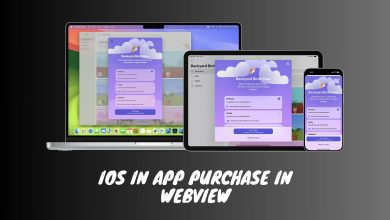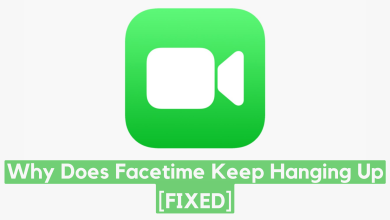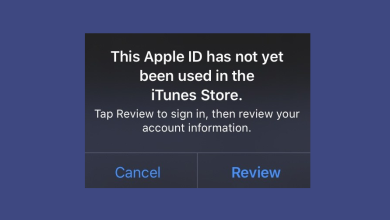7 Easy Fixes for Apple CarPlay Not Working
Apple CarPlay often disconnects right after it starts, or sometimes doesn’t show up at all—even though your phone is charging and your car recognizes it. Usually, this means your phone and the car’s display can’t start or keep the CarPlay connection, whether you’re using a USB cable or a wireless setup.

The most common reason for this problem is a recent iOS update that causes issues with CarPlay compatibility, which has happened after iOS 17 and iOS 18 updates. Other possible reasons include using a damaged or low-quality USB cable, having old software (firmware) on your car’s display, or experiencing Bluetooth interference.
Sometimes, using a VPN, changing your iPhone’s name, or having old CarPlay connections saved on your car’s system can also stop CarPlay from working correctly.
If your Apple CarPlay isn’t working, you can take several troubleshooting steps to resolve the issue.
1. Make Sure CarPlay is Enabled on your iPhone
To resolve issues with Apple CarPlay not working, you first need to ensure that CarPlay is enabled on your iPhone. Sometimes, CarPlay might get turned off accidentally or due to software updates.
Enabling CarPlay involves a few simple steps, and ensuring it isn’t restricted in your Screen Time settings can be crucial.
- Open the Settings app on your iPhone and tap on “General.

Go to General - Select “CarPlay.”

Tap CarPlay - Look for your car in the “My Cars” section. If your car isn’t listed, press and hold the voice control button on your car’s steering wheel to initiate the setup and pair your car with your phone.

Select you Car
1.1. Ensure that CarPlay isn’t restricted in Screen Time settings
Your Screen Time settings might restrict Apple CarPlay from running properly or even getting started.
- Return to the Settings main page and tap “Screen Time.”

Tap Screen Time - If Screen Time is enabled, tap “Content & Privacy Restrictions.”

Tap Content & Privacy Restrictions. - Select “Allowed Apps & Features“.

Tap Allowed Apps & Features - Ensure that CarPlay is enabled by swiping the button to the right.

Tap the CarPlay Toggle
2. Enable CarPlay when your phone is locked
For a flawless CarPlay experience, you must enable CarPlay to function even when your iPhone is locked. If this setting is disabled, CarPlay might disconnect or fail to operate correctly once the phone’s screen turns off.
Enabling CarPlay while your phone is locked ensures you can use CarPlay without interruptions, even when your phone screen turns off.
- Open the Settings app on your iPhone and select “General.

Tap General - Choose “CarPlay.”

Tap CarPlay - Tap your car in the list of connected vehicles.

Tap on your Car’s name - Ensure that “Allow CarPlay While Locked” is turned on by swiping the button to the right.

Turn on the Toggle
3. Ensure Siri is enabled
Siri plays a crucial role in the functionality of Apple CarPlay, allowing you to control various features using voice commands. If Siri is not enabled, CarPlay may not work as expected.
- Open the Settings app on your iPhone. Scroll down and tap on “Siri & Search.”

Open Siri settings - Ensure that the following options are enabled by swiping the buttons to the right:
- Listen for “Hey Siri”
- Press Side Button for Siri (on iPhones with Face ID)
- Press Home for Siri (on iPhones with a Home button)
- Allow Siri When Locked

Turn on the options
4. Restart your iPhone and Car
Sometimes, the simplest solutions can resolve complex issues. Restarting your iPhone and car can clear any temporary glitches or corrupted data that might prevent CarPlay from working properly. To restart your car, turn off the engine, wait for a few seconds, and turn the engine back on.
4.1. For iPhone X and Later:
- Press and hold the Volume and Side buttons until the power-off slider appears.

Press both buttons - Drag the slider, then wait 30 seconds for your device to turn off. Press and hold the Side button to turn your device back on until you see the Apple logo.

Drag the slider to right
4.2. For iPhone 8 and Earlier:
- Press and hold the Top (or Side) button until the power-off slider appears.

Press the Side Button - Drag the slider, then wait 30 seconds for your device to turn off. Press and hold the Top (or Side) button to turn your device back on until you see the Apple logo.

Drag the Slider to right
5. Double-Check your USB Cable

If you are using a wired connection for Apple CarPlay, it is essential to ensure that your USB cable is in good condition and is Apple-certified. An undamaged, Apple-certified USB cable ensures a stable and reliable connection between your iPhone and your car’s infotainment system.
Non-certified or damaged cables may not support CarPlay, leading to connectivity issues or complete failure of the feature. Inspect your USB cable for any signs of wear or damage. If the cable is damaged, replace it with a new Apple-certified one.
6. Reconnect CarPlay
If your CarPlay connection has become corrupted or is not working correctly, you may need to forget and reconnect your car in the CarPlay settings. This process involves removing the existing connection and setting it up from scratch.
- Open the Settings app on your iPhone and choose “General.”

Go to General - Tap” CarPlay.”

Tap CarPlay - Select your car from the list of connected vehicles.

Select your car - Tap “Forget This Car” to remove the existing connection.

Tap Forget this car
Once you do this, you must add and reset the CarPlay connection from scratch. Here’s how to do it:
6.1. For Wired Connection:
- Ensure your iPhone is connected to your car using an Apple-certified USB cable. Turn on your car’s infotainment system.

Connect your Phone via cable - Press and hold the voice command button on your car’s steering wheel to start the setup process.

Press and hold the button - A prompt to enable CarPlay will appear on your iPhone. Select “Use USB Only” and then follow the on-screen instructions to complete the setup.

Tap on Use USB Only
6.2. For Wireless Connection:
- Ensure both Bluetooth and Wi-Fi are enabled on your iPhone. Turn on your car’s infotainment system.

Turn on Bluetooth and WiFi - Press and hold the voice command button on your car’s steering wheel to start the setup process.

Press and hold the button - On your iPhone, go to Settings > General > CarPlay.

Tap CarPlay - Tap “Available Cars” and select your car from the list.

Select your Car
Follow the on-screen instructions to complete the setup.
7. Check For the Latest Updates
Keeping your iPhone and car’s firmware updated is crucial for ensuring the smooth functionality of Apple CarPlay. Updates often include bug fixes, performance improvements, and new features that enhance the overall experience.
- On your iPhone, go to Settings and then “General.”

Tap General - Tap “Software Update.” Your iPhone will check for available updates.

Tap Software Update - If an update is available, tap “Download and Install.” Follow the on-screen instructions to complete the update.

Install if Update is available
7.1. Updating your Car’s Firmware
Check your car’s manual or the manufacturer’s website for instructions on updating the firmware. Some updates may require a visit to the dealership, where professionals can update the car’s system. If available, download the firmware update from the manufacturer’s website and follow the installation instructions.
 Reviewed by
Reviewed by 




